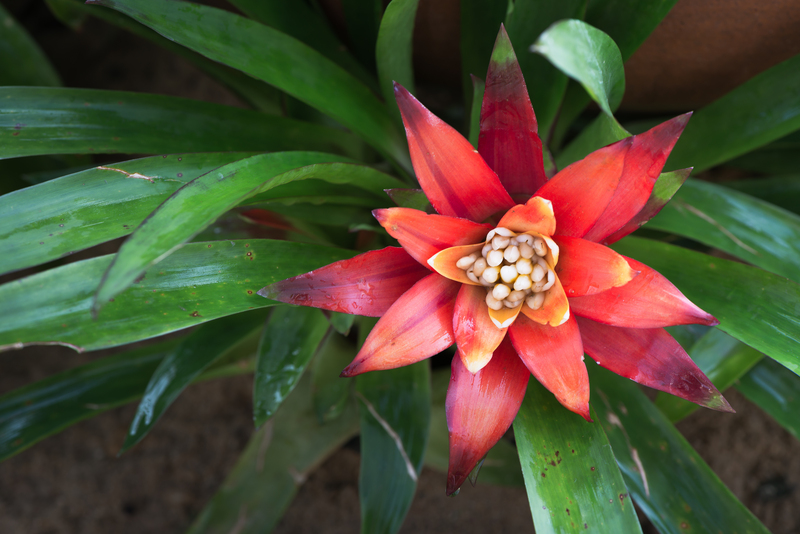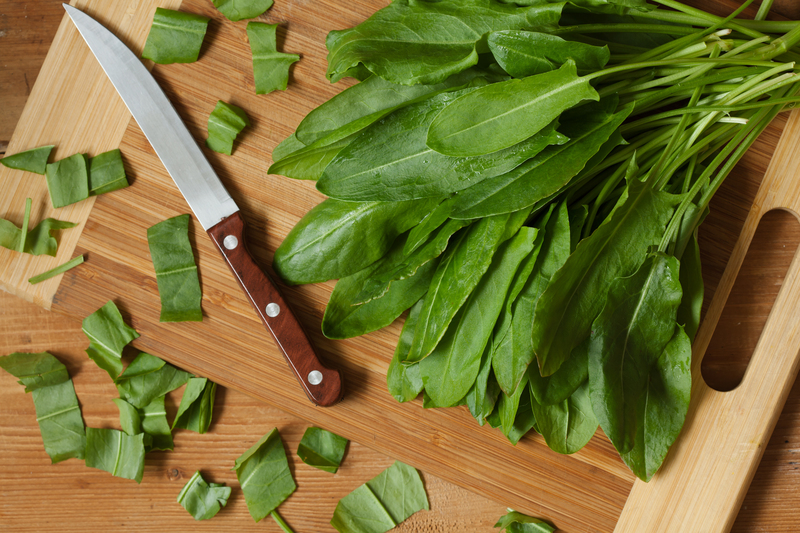Best Practices to Keep Your Lawn Lush During Summer Droughts
Is your lawn looking tired and brown as summer heat intensifies? Even seasoned homeowners struggle to maintain a lush, green lawn during periods of hot weather and summer droughts. Water restrictions, high temperatures, and persistent sun can turn any healthy yard into a patchy, stressed mess. Fortunately, with proven strategies and a few adjustments to your lawn care routine, you can keep your lawn vibrant and healthy all season long.
Understanding the Impact of Drought on Lawns
Summer drought conditions mean a lack of rainfall, soaring temperatures, and often, municipal water use restrictions. These factors combine to stress turfgrass, forcing it into dormancy or causing irreversible damage. Knowing how drought affects your grass is the first step toward creating a survival plan:
- Water loss: High heat leads to evaporation, pulling vital moisture from the root zone.
- Weakened roots: Extended dryness makes it hard for roots to absorb nutrients.
- Increased pest and disease pressure: Stressed turf becomes more susceptible to insect infestations and fungal problems.
- Browning and thinning: Common signs of drought stress are dry, brown patches and sparse growth.
Why Lawns Suffer Most in Summer
Grass species commonly used in lawns prefer moderate temperatures and regular rainfall. During summer droughts, even the most drought-tolerant grasses can struggle without intervention. This makes it vital to learn how to foster resilience through proper lawn care techniques.

Essential Strategies to Maintain a Lush Lawn During Drought
While you can't change the weather, you can take actionable steps to minimize drought damage and preserve your lawn's health. Below are the best practices for drought-proofing your lawn and keeping it green, even in challenging summers.
1. Choose the Right Grass Type
Not all grass species are created equal. When planning or renovating your lawn, select drought-tolerant grass varieties that thrive in your climate. Here are popular options:
- Bermuda grass: Renowned for its resilience in heat and low water needs.
- Zoysia grass: Handles drought and traffic well, with dense growth.
- Buffalo grass: Native to arid regions, requiring much less water than typical lawn grasses.
- Tall fescue: Among the most water-efficient cool-season grasses due to its deep root system.
2. Water Wisely
Proper watering is crucial for drought resilience. Overwatering can be as damaging as under-watering, especially if restrictions limit your use of irrigation. Use the following tips to ensure your lawn gets the most from every drop:
- Water deeply but infrequently: This encourages roots to grow deeper, making grass more drought-resistant.
- Time watering early: Water between 4 a.m. and 9 a.m. to prevent evaporation and fungal problems.
- Target dry spots: Focus on high-stress areas instead of blanket watering your whole lawn.
- Use efficient irrigation: Drip systems, soaker hoses, or smart sprinkler controllers reduce water waste.
- Comply with local regulations: Always observe water use restrictions to avoid fines and protect community resources.
Pro tip: Place an empty tuna can on your lawn to measure irrigation - when it's filled to around 1 inch, your lawn has received enough water for the week.
3. Mow High and Less Often
Mowing is often overlooked during periods of summer drought. Cutting too short exposes roots and speeds water loss. Follow these mowing best practices for a lush, resilient lawn:
- Raise your blade: Set mower height to 3-4 inches. Taller grass shades roots, keeps soil cooler, and conserves moisture.
- Mow only when necessary: Allow grass to grow longer between cuts during hot, dry spells.
- Leave the clippings: Mulched clippings return nutrients and moisture to the soil.
4. Improve Soil Health
Healthy, organic-rich soil retains water better and nurtures robust lawns. To improve your lawn's drought resistance:
- Top-dress with compost: Organic matter increases water retention and feeds beneficial microorganisms.
- Aerate annually: Core aeration relieves soil compaction, allowing roots to penetrate deeply and access water.
- Test and amend soil: Apply lime or soil conditioners as needed to optimize pH and nutrition.
Tip: The best time to aerate is in the spring or fall, but light aeration during summer can also aid drought-stressed lawns.
5. Fertilize Prudently
Too much fertilizer during a drought can harm your lawn. Excess nutrients without sufficient water can "burn" grass and lead to environmental runoff. Use fertilizer thoughtfully:
- Apply during growth windows: Fertilize lightly in spring or early fall, when roots can absorb nutrients effectively.
- Avoid high-nitrogen formulas during drought: Nitrogen stimulates leaf growth, increasing water needs.
- Opt for organic fertilizers: Slow-release nutrients support soil health and reduce burn risk.
6. Mulch and Protect Bare Spots
Naked soil loses water rapidly and is more prone to weed invasion. To shield your lawn:
- Add a thin layer of mulch: Around trees and garden edges, mulch locks in moisture for root zones.
- Overseed bare patches: Use a drought-tolerant grass seed blend to repair and strengthen thin areas.
Overseeding in early fall ensures new seeds establish before the next summer drought arrives.
7. Control Weeds and Pests
Weeds steal moisture and nutrients from your turf, while pests and diseases can gain the upper hand in stressed lawns. Keep your summer lawn healthy:
- Hand-pull weeds: Focus on invasive species before they spread.
- Use selective herbicides sparingly: Avoid treating large areas during drought - spot-treat when necessary.
- Scout for signs of insects and disease: Early intervention limits damage and helps maintain a lush lawn during drought conditions.
Advanced Tips for a Lush Lawn in Extreme Drought
When drought drags on, go beyond the basics to ensure your grass survives and rebounds quickly:
Consider Lawn Alternatives
- Groundcovers: Low-growing plants like creeping thyme or clover require less water than traditional grass.
- Native species: Native grasses adapt best to regional weather and need minimal irrigation after establishment.
Lawn alternatives can provide green coverage and attractive landscapes during persistent drought conditions.
Install Smart Irrigation Technology
- Rain sensors: Automatically pause irrigation during rainfall.
- Weather-based controllers: Adjust schedules for optimal efficiency based on local conditions.
- Drip or subsurface irrigation: Delivers moisture directly to roots, minimizing evaporation.
New irrigation technology can cut water use by up to 50% compared to outdated systems.
Implement Good Lawn Dormancy Practices
- Let your lawn go dormant: Grass turns brown to conserve moisture but will recover when rain returns.
- Provide minimal water: Give 1/2 inch of water every 2-3 weeks, just enough to keep roots alive.
- Avoid high-traffic: Dormant lawns are easily damaged by heavy use; keep off as much as possible.
When to Seek Professional Help
If your lawn struggles to recover after a drought or you're facing persistent problems with weeds, compaction, or disease, consult a local lawn care professional. Expert analysis can identify soil issues, pest pressures, and potential upgrades or grass replacements suited to your precise climate.
Long-Term Practices for Drought-Resistant Lawns
- Practice year-round soil care: Compost, aerate, and mulch to keep your lawn hearty before drought strikes.
- Stay vigilant: Routinely check for pest, disease, and irrigation issues.
- Educate yourself: Understand your grass type's unique water and care requirements.
- Work with nature: Xeriscaping and selecting plants suited to your environment means less work and better results.

Frequently Asked Questions About Drought Lawn Care
How often should I water my lawn during a summer drought?
Answer: Water deeply once a week (1 inch total), preferably in one session at dawn. If allowed, maximize deep soakings over frequent shallow watering.
Should I fertilize my lawn in drought?
Answer: Avoid applying fertilizer during severe droughts. Light feedings in spring or early fall are most effective. Over-fertilization can stress or damage grass when irrigation is limited.
Can my brown lawn recover after drought?
Answer: Most grass species can survive extended dormancy and recover when normal rainfall resumes. If roots die from prolonged dry conditions, reseeding or sodding may be required.
What's the best mowing height during summer drought?
Answer: Set mower blades to 3-4 inches or the highest recommended for your grass type. Taller grass conserves soil moisture and shades roots from extreme heat.
Conclusion: Keep Your Lawn Green, Even in Tough Summers
Maintaining a lush lawn during summer droughts isn't just about watering--it's about selecting the right grass, using water responsibly, improving soil, smart mowing, and adapting practices to your climate. By acting early and following these evidence-based strategies, you can protect your lawn during drought and enjoy a beautiful, healthy yard all summer long.
For even more lawn care tips during summer droughts, follow local extension agencies or consult turfgrass experts. With consistent effort and a proactive mindset, even the hottest, driest summers cannot keep you from achieving a thriving, resilient lawn.